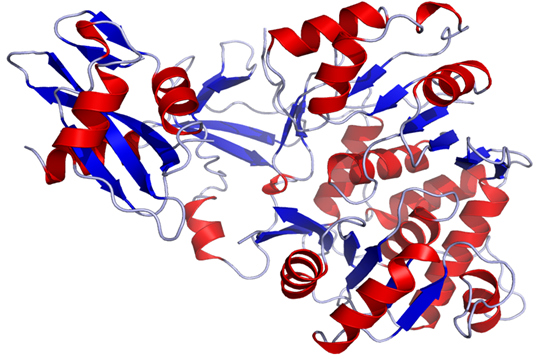
7 Ways Bioluminescence Has Revolutionized Medical Research
By Jordan Rosenfeld, Mental Floss, 1 June 2016.
By Jordan Rosenfeld, Mental Floss, 1 June 2016.
Bioluminescence is nature’s chemical flashlight - lighting the dark inner reaches of remote caves, deep waters, and even moonless night skies with its eerily beautiful greenish glow. As far back as 500 BCE ancient sailors wrote about luminous and sparkling night seas. The protein that causes this natural light is called luciferin, which can be found in special bacteria, marine creatures and planktons, and even some algae and mushrooms. The light is the result of a chemical reaction between its enzyme form, luciferase, and some form of added energy (oxygen, sugar, etc.).
In 2008 three scientists won the Nobel Prize in Chemistry (including Martin Chalfie, below) for developing green fluorescent protein (GFP) and genetically modifying it so that animals could be engineered to produce their own. Since then, it has become widely used in medical and scientific research. Here are seven ways scientists are using the glowing genes of jellyfish and fireflies in medical research.
JELLYFISH
You may harbor a healthy fear of the sting of an ocean jelly, but they’ve probably done more good for your health than harm. The glowing protein extracted from the crystal jelly (Aqueorea victoria, seen above), has become an indispensable tool in cellular research and medicine.
1. Manufacturing GFP in a variety of organisms
In 1994, neurobiologist Martin Chalfie inserted the gene into the cells of E. coli bacteria and the roundworm C. elegans. Under UV light, the cells emitted a green glow. The gene for green fluorescent protein (GFP) has since been inserted into the genetic code of many different species, which can then be made to make their own GFP. GFP and its cousin proteins have been used to induce glowing in bacteria, protozoa, plants, nematodes, birds, mammals, and fish, among others.
2. Bioengineering monkeys for neurology
Image credit: E. Sasaki et al 2009 via MIT Technology Review
Japanese scientists have been inserting bioluminescent genes into mammals in the hopes of creating animal models of neurological diseases, such as Parkinson’s, for which rodent models aren’t sufficient.
Researchers injected viruses carrying the gene for GFP into 91 marmoset monkey embryos. Of the 80 transgenic embryos transplanted into surrogate mothers, five bioluminescent babies were born in the first round and another three thereafter, in 2009.
3. Making cats glow for FIV/HIV
Image credit: Mayo Clinic via Scientific American
Researchers at the Mayo Clinic and Yamaguchi University in Japan successfully injected a lentivirus genetically engineered with GFP genes directly into unfertilized cat eggs in an attempt to track the spread of FIV, which moves in a similar vector to human HIV.
FIREFLIES
Firefly luciferase is considered a “brighter” form of bioluminescence, and it glows more yellow-green than its marine counterparts (which are more blue-green). It’s often used in bioluminescent imaging (BLI), which allows neurologists to see individual neurons, and in bioluminescence resonance energy transfer (BRET), to monitor protein-protein interactions in plants and mammalian cells.
4. Revealing plant biology
Image credit: Wikia
In the mid '80s, emboldened by the advances in bioluminescent technology, plant biologists created a glowing tobacco plant with firefly bioluminescence for research purposes. None of this tobacco was ever consumed by people, but it was the beginning of a new way to study plant cell biology. Plant biologists are still using the technology today to study everything from root systems to plants’ circadian systems.
5. Improving the detection of blood clots
In 2011, scientists from Connecticut College used firefly luciferase as an imaging agent to monitor patients treated with heparin, the blood thinner that is given to prevent or treat blood clots. The scientists mixed the firefly luciferase with a unique dye that coaxes the protein to emit near-infrared light. This new blended bioluminescent agent was able to help them detect tiny amounts of a blood protein, called factor Xa, and better monitor the effectiveness of heparin treatment.
6. Tracking the path of HIV transmission
A new study in the journal Cell Host & Microbe attempted to track the transmission of HIV between heterosexual males and females. Using a virus similar to HIV called SIV (simian immunodeficiency virus) that affects primates, researchers genetically inserted the luciferase gene into the SIV cells and introduced that into the vaginas of uninfected rhesus macaques. The newly infected cells glowed, revealing that SIV does not enter by the cervix, as previously thought. This result may lead to research revealing a similar pathway in human HIV.
7. Illuminating the connection between placenta and fetus
Image credit: Jeyan S. Kumar et al via Nature
A recent study in Nature used bioluminescent imaging with firefly luciferase on pregnant mice to better understand the transport functions of the blood-placenta barrier (BPB), and how well this protects the fetus from substances ingested by the mother. Their research may also help us to understand the same function of the blood-brain barrier, which prevents molecules from easily entering or exiting the brain’s vascular system. Researchers are hopeful this can translate to human studies in the near future.









No comments:
Post a Comment
Please adhere to proper blog etiquette when posting your comments. This blog owner will exercise his absolution discretion in allowing or rejecting any comments that are deemed seditious, defamatory, libelous, racist, vulgar, insulting, and other remarks that exhibit similar characteristics. If you insist on using anonymous comments, please write your name or other IDs at the end of your message.